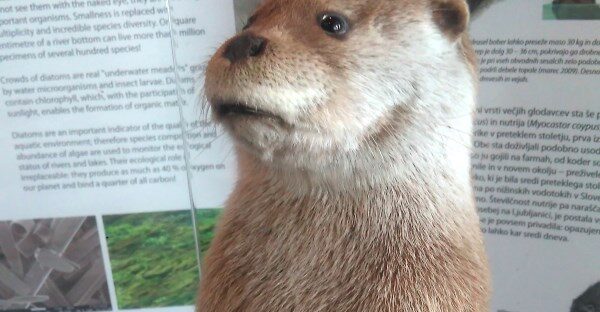Month: July 2016
Background Dry grasslands – semi-natural dry grasslands on calcareous substrates (6210) and species-rich Nardus grasslands on siliceous substrates in mountain areas (6230) – have a bad/unfavourable conservation status in Slovenia. Overgrowth resulting from land abandonment is a critical threat for these habitat types. Additionally in the past few decades, orchards have been disappearing rapidly for…

Governance of Waste EEE (WEEE) and Waste PBA (WPBA) Flow and Consumer Friendly Collection and Awareness Raising
Background Electrical and electronic equipment (EEE), and waste arising from these appliances, including waste portable batteries and accumulators (PBA), have environmental impacts throughout their life cycle. This is due to the fact that in recent years, EEE has increased in technological complexity, with new product innovations and ever-shortening product life expectancy. The amount of collected…
Background The systemic control of pharmaceuticals in waters remains unregulated in the EU, despite the European Commission’s proposal in 2012 for the restriction of the three most common pharmaceuticals in water. Among the most frequent are the remains of medicines such as endocrine disruptors, antibiotics, remains of painkillers and tranquilisers. Pseudoendocrines are now classified as…
Background Sustainable forest management is based on the long-term adaptability of forest ecosystems that starts at the genetic level. Forest genetic monitoring (FGM) is therefore a crucial component of any sustainable forest management operation, as it presents the possibility of detecting potentially harmful changes in forest adaptability before they are seen at higher levels. By…

Population level management and conservation of brown bears in northern Dinaric Mountains and the Alps
Background Conflicts between humans and brown bear (Ursus arctos) populations in Slovenia remain an ongoing threat to the conservation status of bears and steps must be taken to improve coexistence. Measures need to tackle such challenges as a lack of understanding of bears’ socio-economic and environmental value, inflated estimations of the risk of bear attacks…
Background Inappropriate forestry and hunting practices, lack of active management and uncontrolled human leisure activities have resulted in the loss of living, feeding, breeding and wintering habitats of targeted species in the Kočevje municipality territory. Consequently, a significant decline in some species populations has been detected. Additionally, waste dumping in karst caves and unsustainable agricultural…

Demonstration of innovative soil washing technology for removal of toxic metals from highly contaminated garden soil
Background Soil pollution is one of the main environmental problems in Europe and worldwide. Heavily polluted soils represent a serious threat to public health. They cause pollution of groundwater, hamper the functionality and health of agricultural areas, and reduce biological diversity. European Commission data indicates that 16% of the EU land area is affected by…
Background Cyanobacteria can be found in almost every terrestrial and aquatic habitat. Aquatic cyanobacteria are known for their extensive and highly visible blooms that can form in both freshwater and marine environments. The massive blooms can be toxic and frequently lead to the closure of recreational waters when spotted. Therefore, mass occurrence of cyanobacteria is…

Nanoremediation of water from small waste water treatment plants and reuse of water and solid remains for local needs
Background The availability of drinking water of suitable quality and in sufficient amounts is fundamental to food production, industrial activities and public health and sanitation. Anthropogenic climate change is already causes incidents of water scarcity and drought in Europe. In April 2009, the European Commission presented the White Paper, ‘Adapting to climate change: Towards a…











